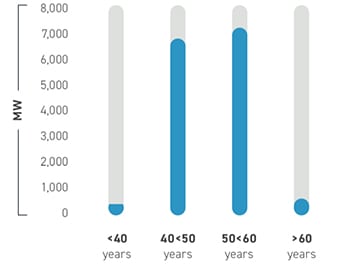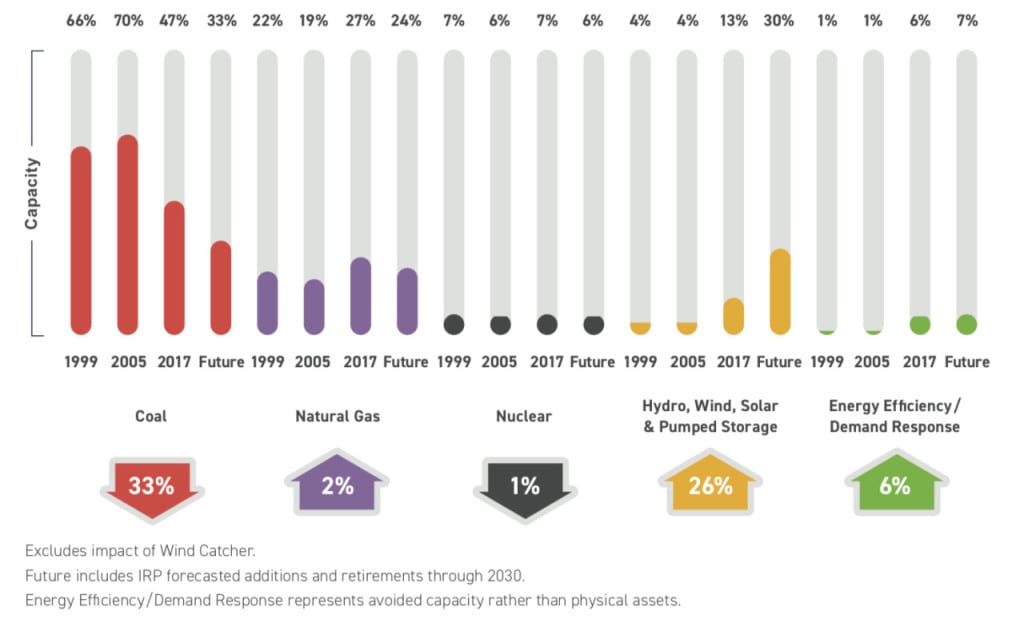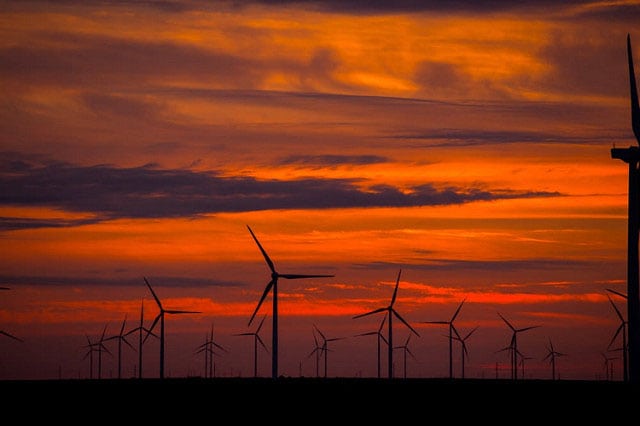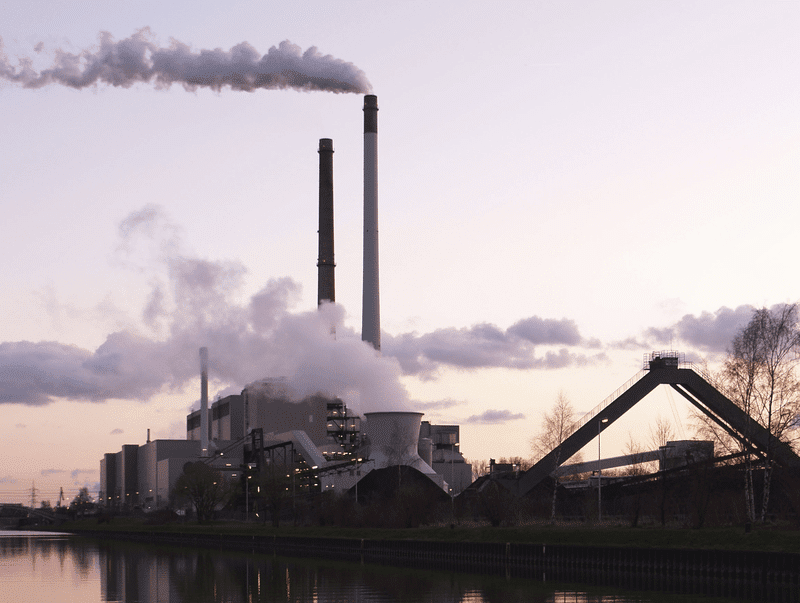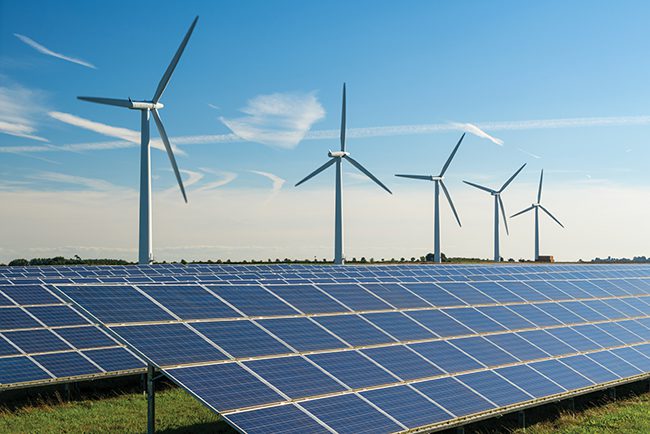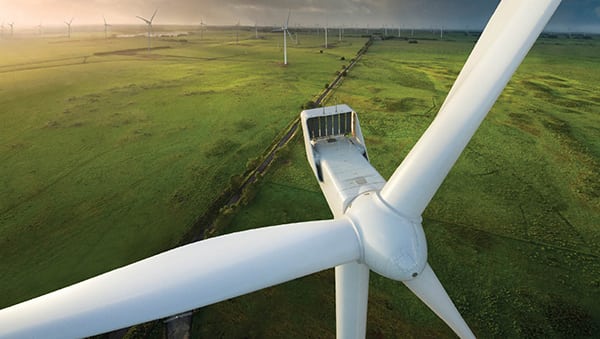American Electric Power (AEP), one of the nation’s largest power generators, will pursue a strategy to reduce its carbon dioxide (CO2) emissions by 60% from 2000 levels by 2030, and 80% from 2000 levels by 2050.
AEP expects to achieve carbon reductions through a variety of actions, including investments in renewable generation and advanced technologies and an increased use of natural gas generation. It said it will also invest heavily in transmission and distribution systems to enhance efficiency as well as in expanded demand response and energy efficiency programs.
According to Nicholas K. Akins, AEP chairman, president and chief executive officer, the move is driven by customer preferences. “Our customers want us to partner with them to provide cleaner energy and new technologies, while continuing to provide reliable, affordable energy,” he said in a February 6 statement. “Our investors want us to protect their investment in our company, deliver attractive returns and manage climate-related risk. This long-term strategy allows us to do both.”
The strategy doesn’t mean AEP will become a purely clean energy company, Akins noted in a letter to stakeholders published in the strategic vision. “We believe in an ‘all of the above’ strategy, which includes investments in energy efficiency, renewables, natural gas, nuclear, hydro-electric and pumped storage and coal,” he said. “While coal is a smaller proportion of our resource mix than in the past, it remains important to the reliability and resiliency of the grid. “
Akins said the strategy also responds to changes transforming the power sector. “There is no question the electrification of our economy is accelerating,” he said. “If policymakers can organize around a utility model that is highly digitized with new technology and analytics, we can invest in the infrastructure needed to provide universal access to clean energy to all customers.”
AEP Strategy to Continue Factoring in Carbon Regulations
The publicized strategy isn’t exactly a major shift in direction for AEP. While the company relies on coal for nearly half its power production, Akins has acknowledged the value of carbon rules, saying as long ago as November 2015 that the now nearly dead Clean Power Plan could serve as a “catalyst for the transformation that’s already occurring in our industry.”
On Tuesday, the company said that it has “factored future carbon regulations into the company’s evaluation of generation resource options for many years and will continue to do so.” It explained that though federal efforts to repeal the Clean Power Plan create uncertainty for near-term regulatory action on climate change, “some form of carbon regulations” is “likely” in the future. “Today, we are taking a longer-term view of carbon by setting new goals for carbon dioxide emission reductions for the future based upon resource plans that account for economics, customer preferences, reliability and regulations,” it said.
AEP has already slashed CO2 emissions by 44% since 2000, it noted. That feat has likely been achieved by its transformed generation profile as well as a reduction in fleet size.
The company, which moved the bulk of plant operations into regulated markets, noted in fourth-quarter 2017 earning documents released January 25 that fleet-wide generation decreased a stunning 70% (27,532 GWh) in 2017 compared to the year before, primarily due to the sale of large plants in competitive markets. Today, only 47% of the company’s generation fleet is coal-fired, compared to 70% in 2005. AEP’s natural gas capacity has surged from 19% in 2005 to 27%, while renewable capacity has increased from 4% in 2005 to 13% today.
In the future, depending on how electrification accelerates and technologies—such as large-scale battery storage or carbon capture and storage—mature, AEP could possibly exceed its carbon goals, it said. “Our goals could also be impacted if electrification of the transportation sector (or other high carbon-intensity industries) accelerates and demand for electricity increases beyond what could be met with additional carbon-free resources. However, this increased use of electricity would still provide a net economy-wide reduction in carbon emissions, as some fossil fuel use from other sectors would be eliminated.”
Long-term carbon reductions will likely be achieved as most of AEPs coal-fired units reach the end of their lives (Figure 1) and are replaced with renewables or highly efficiency natural gas, the company said. “AEP does not anticipate building new coal units. However, if technological (e.g., carbon capture) and economic barriers are overcome, that could possibly change,” it noted.
- AEP’s coal unit age in 2030. By 2030, more than one-half of AEP’s coal units will be within a decade or less of their typical useful life of 60 years. Courtesy: AEP
For now, AEP will work to manage its existing coal fleet for a lower capital investment over time. “This allows us to optimize unit operation, investment and depreciation rates to manage both customer and investor value,” it said.
Future Investments Centered on Transmission, Distribution, and Renewables
Meanwhile, in a departure for a company whose past capital investments had been primarily focused on large, central generating stations—including building new capacity and upgrading existing coal-fired units to comply with environmental rules— the company’s newest consolidated capital forecast shows that of $17.7 billion earmarked for a period between 2018 and 2020, 100% of capital will be allocated to regulated businesses and contracted renewables. The bulk of spending will be allocated to transmission and distribution, and nearly 10% allocated to contracted and regulated renewables (Figure 2).
- AEP’s consolidated capital forecast. Courtesy: AEP
AEP’s capex will “largely be spread across our business, but our interest in terms of how we allocate capital, transmission is still a preferred place for us to put capital, distribution and the wire side is still a preferred place for us to put capital, and there will be small portions associated with competitive renewable and some portion still associated with environmental at our generation,” Brian Tierney, AEP’s chief financial officer, said in a fourth-quarter 2017 earnings call on January 25.
AEP’s resource plans now suggest the company will add 3 GW of solar and 5.3 GW of wind generation to its portfolio by 2030 (Figure 3). Among its largest planned investments is a $4.5 billion wind farm in Oklahoma. The company is seeking approvals for the 2-GW Wind Catcher Energy Connection project in Oklahoma, Arkansas, Louisiana, and Texas.
- AEP’s changing portfolio. AEP says its long-term strategy is to become a fully regulated, premier energy company focused on investment in infrastructure and energy solutions that deliver an exceptional customer experience. “Reshaping our generation portfolio to include more renewable energy and focusing on the efficient use of energy, demand response, distributed resources and technology solutions to more efficiently manage the grid over time is part of this strategy.” Courtesy: AEP
In the January 25 earnings call, Akins lauded the project as a “very unique opportunity,” even though a few investors had opposed it, saying, “overall our regulatory teams have demonstrated the benefits of the project.” Akins added: “Our willingness to take on risk associated with this project while also providing all the benefits to the customers is a testament that we really are trying to do something good for customers.”
Decarbonization as a Business Strategy
AEP joins a growing list of U.S. power companies with ambitious carbon goals.
Among notable goals is NRG Energy’s, an independent power producer which said in November 2014 it would reduce absolute CO2 emissions 50% by 2030 and 90% by 2050 from a 2014 baseline. In 2016, FirstEnergy Corp. set an aggressive goal to curb its carbon emissions by at least 90% below 2005 levels by 2045, even though 56% of its power mix is coal-fired, while MidAmerican Energy announced a goal to provide 100% renewable energy, though it did not set a target date.
Last March, Xcel Energy said it expects to see at least a 45% reduction companywide in carbon emissions from 2005 levels by 2021, if it is able to fully implement approved and proposed renewable energy plans. Then in April, Duke Energy announced it will reduce carbon emissions 40% below 2005 levels by 2030, which will be driven by retirement of more than 40 older, less efficient coal units. In May, Detroit-based DTE Energy said it wants to slash its carbon emissions by more than 80% from 2005 levels by 2050, a reduction it said is in line with broad targets identified by scientists to address climate change.
—Sonal Patel is a POWER associate editor (@sonalcpatel, @POWERmagazine)


